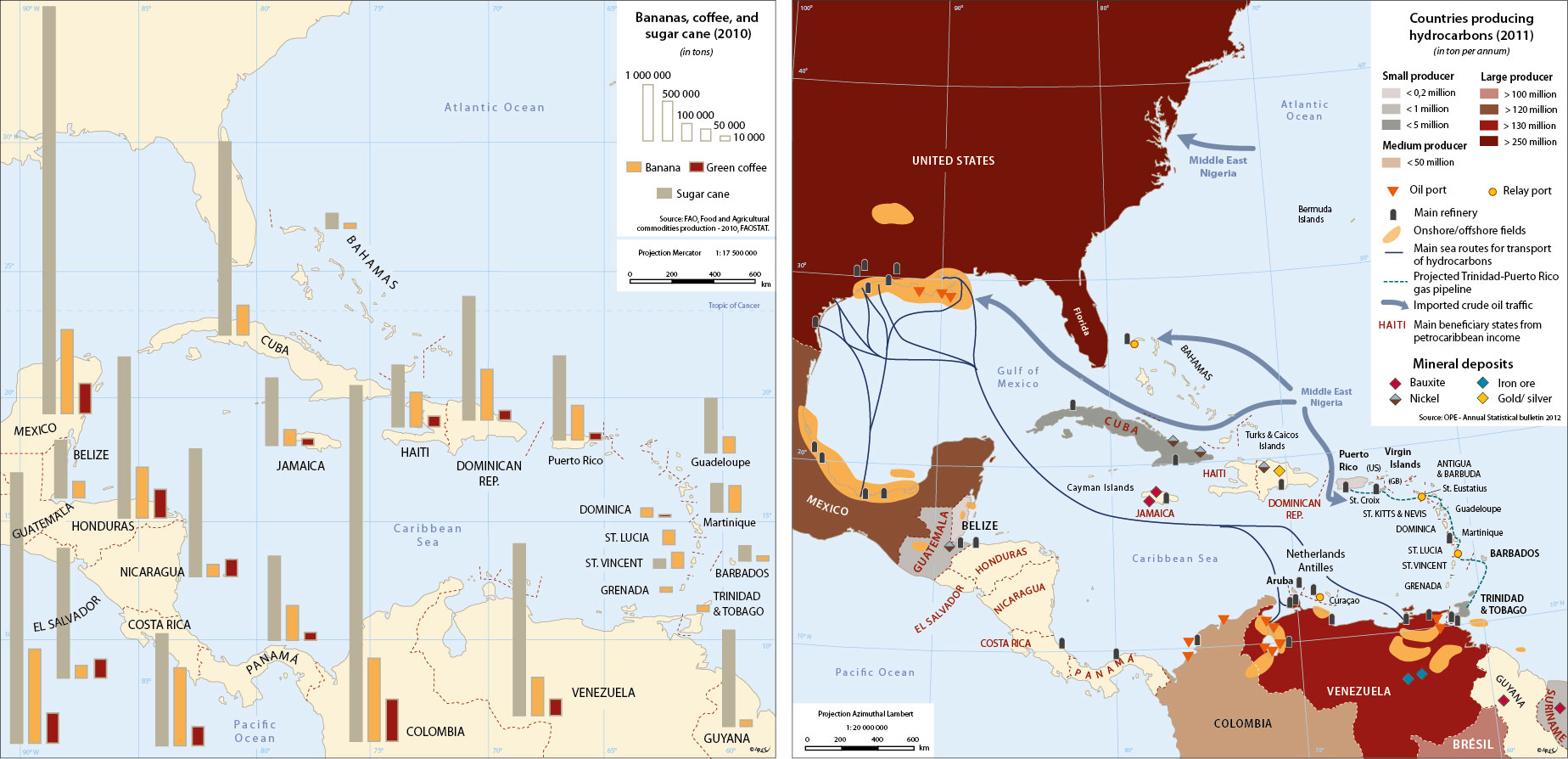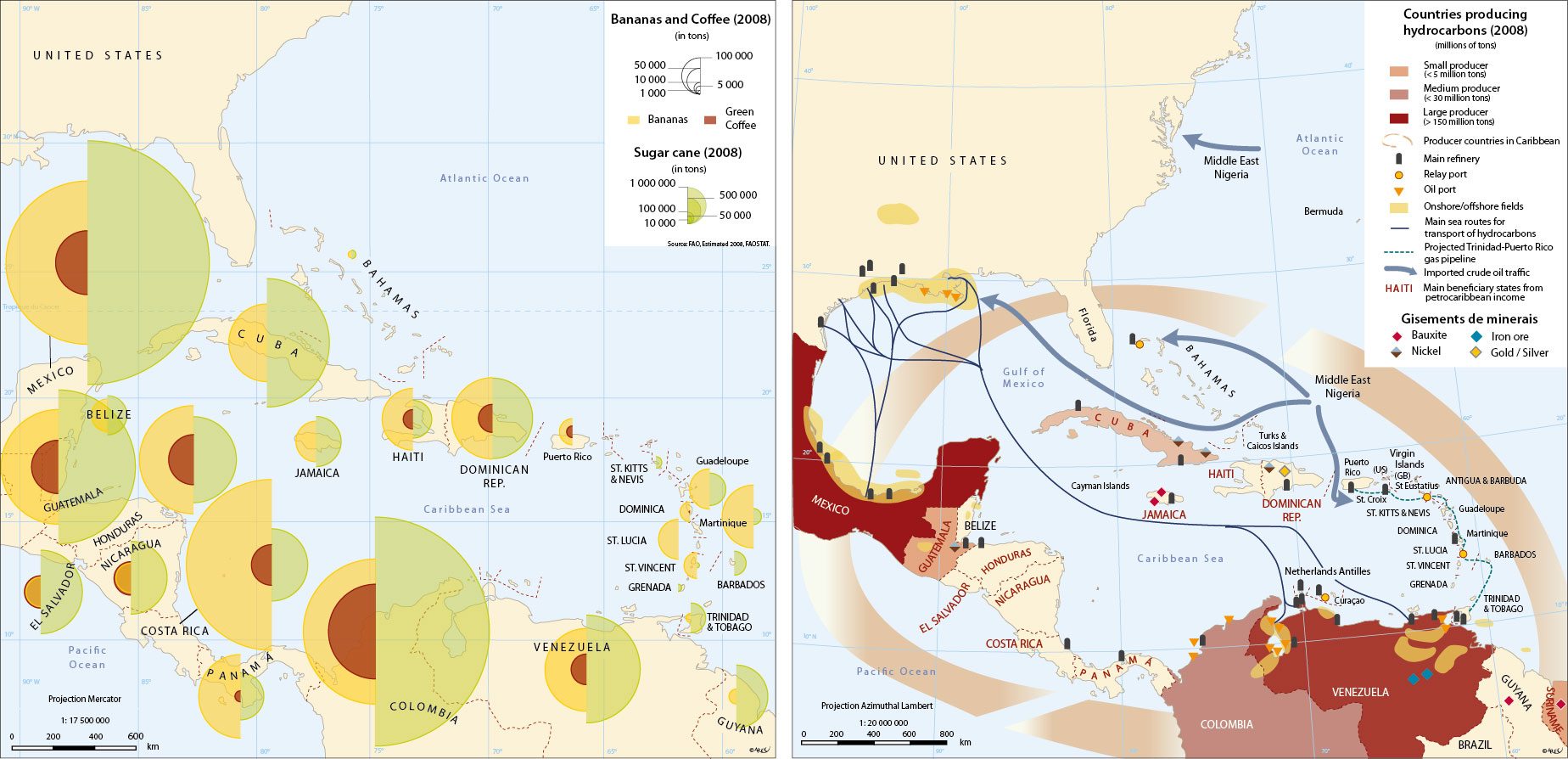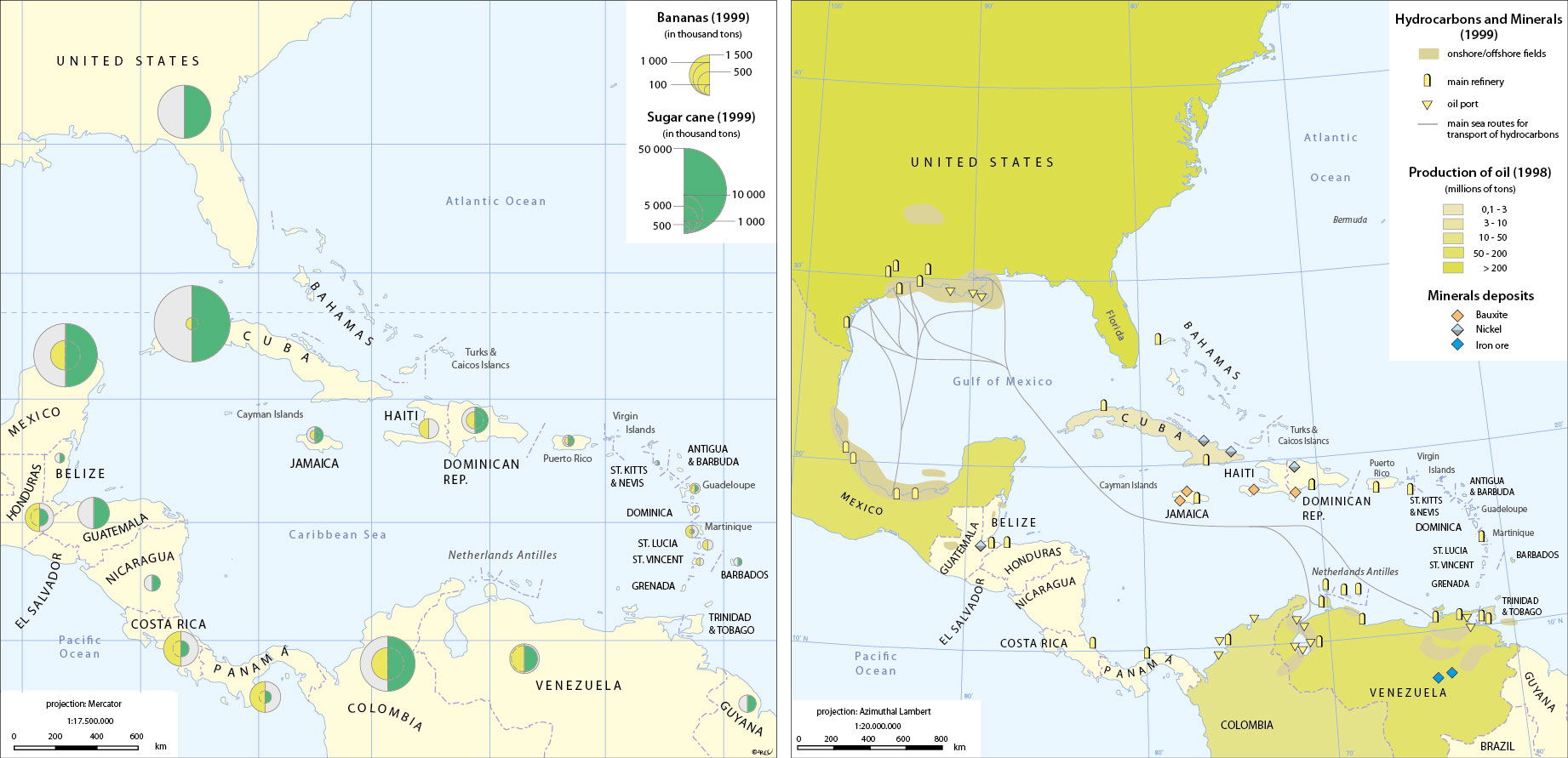
- Agriculture (2006-2009)
- Agriculture : mutation (2005-2006) FR ES
- Agriculture: emblematic landscapes
- Agriculture: food-self sufficiency (2005-2007)
- Agriculture: production (2007-2008)
- Commerce extérieur (2001) FR
- Currencies
- Economic organisations (2009)
- Fishing (1995)
- GNP per capita (1995)
- Integrated energy strategy (2004-2007)
- La Chine dans la Caraïbe FR
- La pêche dans le bassin Caraïbe - 2019 FR
- Le bassin caribéen, théâtre affirmé d'une guerre d'influence sino-étasunienne ? FR
- Nouveau contexte pétrolier (2015) FR
- Nouvelles donnes régionales (2004-2006) FR
- Sugar and Oil (1999-2011)
- Tax havens (2007-2010)
- Tax havens (2008-2012)
The cultivation of sugar cane took hold in Hispaniola from the earliest years of the 16th century. Imported from the Canaries by Christopher Columbus in 1493, the cane spread across the warm and humid lands of the West Indies. By 1958, sugar represented 81% of Cuba's exports. The 16th and 17th centuries were to see Cuba, Jamaica, Haiti, and the Lesser Antilles transformed into the "sugar islands." Even though tobacco, indigo and stock rearing remained important, sugar cane constituted the mainstay of the first 'age' of resource development in the Caribbean.
The revenues derived from the sugar islands substantially underpinned the accumulation of the financial capital in the global European economies of the 17th and 18th centuries, notably the kingdoms of France and England. The 'age of sugar' was the time when the West Indies would play a major role in the economies of the metropolitan countries. It would leave a deep mark on human relations and attitudes. The 'ages' that followed could never attain this position, but instead were to become integral to a more classic system of production in relation to raw materials. New export cultures developed, starting with coffee, followed by the banana, in the islands and throughout Central America. The expanding cultivation of the coffee bean was adapted to the steeply sloped terrain and cooler climate, markedly in contrast to sugar cane which favoured the warm and humid plains at very low altitudes. The first coffee plants were introduced by the English in Jamaica in 1718 and by the French in Martinique in 1721. The vogue for this beverage in Europe was to stimulate further development that would extend in particular to the countries of the continental mainland. Coffee and sugar shared a capacity to enhance the pleasures of the fashionable European dinner party, appealing to the imaginary by conjuring a sense of the exotic.
The second great 'age,' which did not replace sugar cane but coexisted with and succeeded it, was that of the banana. At the end of the 19th century, Jamaica was the region's foremost exporter of bananas, but competition would rapidly appear on the continent, from Costa Rica, Guatemala, and Honduras. What soon became apparent was a repeated characteristic of Caribbean development: the limitations of a restricted land area. As soon as production was exposed to the external competition of large-scale cultivation on vast, farmed areas, with low cost labour, as in Africa or Central America, the small-scale production of the islands rendered them vulnerable. The many battles surrounding recent commercial accords testify to this competition. Hydrocarbons and fishing have not fulfilled the same economic role. Fishing is almost wholly subsistence-orientated. It does not extend beyond the margins of the Caribbean Basin in providing for local and regional demands. Although hydrocarbons offer a substantial resource base (above all for Venezuela and Trinidad & Tobago), as with other raw materials from the industrial era, like bauxite in Jamaica, they have not stamped their mark across the whole of the region, instead it is the continental margins that are most affected. Agricultural production remains a part of the resource base surviving from the two earlier 'ages' of the Archipelago, with much still destined for export, but the arrival of tourism was to inaugurate a yet another 'age.'
top
|
  |















